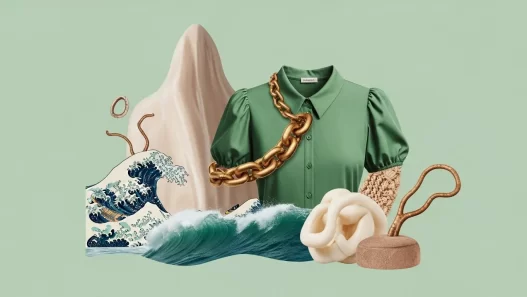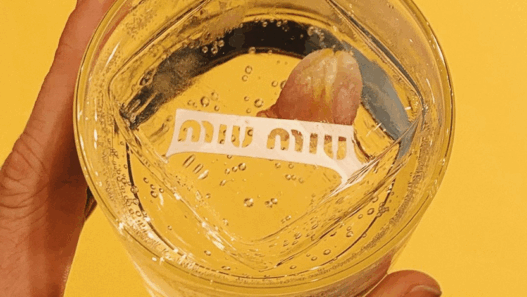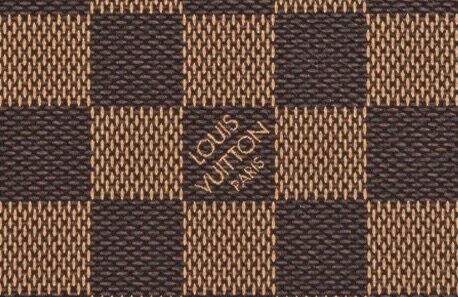India and Perú are countries that share the privilege of possessing two of the seven wonders of the world. On the one hand, the South Asian country has the imposing mausoleum of Taj Mahal in the city of Agra and on the other hand, the South American country has the millenary Inca citadel of Machu Picchu, located in the city of Cuzco. But not only do they share this privilege, but also possible international trade relations.
To illustrate this journey through history and fashion, it is important to know that during the Inca Empire, the Incas (the main builders of Peruvian culture and identity) used as part of their clothing, garments made of alpaca and vicuña fibers, as well as gold, copper and silver jewelry, according to their political and social rank.
Likewise, history tells that when the Inca emperor Atahualpa was captured by the Spaniards. He gave in exchange for his freedom large amounts of gold and silver; however, he was sentenced to death, which meant the end of the Inca empire (For more details of this story, you can review the interpretation of Juan de Betanzos, in his book “Suma y narración de los Incas” [Sum and narration of the Incas]). Nowadays, gold, silver and copper are still the most valued and coveted minerals in the world and Perú continues to be one of the main producers of these valuable minerals that on several occasions were also exported to India.
Having already briefly known the use and history of minerals in Perú, we can now focus on the main attraction of the fashion and luxury industry; we will talk about gold, silver, copper and alpaca fiber as main inputs for the fashion industry in the world.
Luxury brands that use minerals such as gold, silver or copper
Among the main luxury brands that use minerals to create great collections and pieces of jewelry, the brands Harry Winston, Bucellati, Van Cleef and Arpels, Graff, Tiffany & Co., Piaget, Chopard, Cartier, Bulgari, Mikimoto, Hermés, Chanel, Grisogono, Montblanc, David Yurman, Gucci, Tacori, Paul Morelli, Bacarat, Harlotte Lebeck, Roberto Coin, etc.
Major jewelry brands in India and Perú
In India, each of the ornaments to be used, has a great meaning and even historical representation. Some of the brands that are developed in this country are brands like Kalyan Jewelers, Malabar Gold & Diamonds, Tanishq, Joy Alukkas, Pc Jeweller, Orra, TBZ, etc.
On the other hand, in Perú, a country with a millenary historical and cultural wealth and with large reserves of gold and silver, some brands stand out such as Sissai, Ilaria, Carati Joyería, Lima Joya, Lorena Pestana, Mónica Sordo, Candor Joyería, Casa Collab, etc.
It is important to note that in the Inca culture, gold had a spiritual and not a material value.
Luxury brands that use alpaca fiber
Perú is the country that owns about 72% of the world’s alpacas and is the main exporter of this fiber to several countries, thanks to the Free Trade Agreements signed with several countries.
Some of the luxury brands that have used alpaca fiber as raw material for the elaboration and exhibition of their garments in several of their collections and catwalks are Louis Vuitton, Max Mara, Prada, Chanel and Versace.
Likewise, in Perú there are brands that use the luxury fiber fusing art and culture very well, in their original collections. Some of these brands are: Annaiss Yucra, Ayni, Mozh Mozh, Sophia Lerner, D.N.I. Kuna, Andean, Be Alpaca, Killafibers, etc.
Sustainability in the use of minerals.
Today, we are facing a new panorama of consumers, and they choose and bet on sustainable products, because they are consumers who are quite committed to the environment; that is, they bet on brands with social responsibility, with corporate responsibility policies and the highest and strictest indexes of ethical standards. Therefore, several brands are currently becoming more aware and are becoming sustainable brands that seek to minimize the use of toxic products, such as mercury.
Among the luxury brands that have been concerned about sustainability, we find the Cartier brand that uses “conflict-free” diamonds, another very similar case is that of the Chopard brand, which is committed to use in their creations gold pieces extracted by hand “ethical gold”, the Tiffany brand also joined by indicating the exact origin of the diamond in their products, Sissai a Peruvian brand has been developing its collections with ecological gold, Casa Collab is the first Latin American company to be certified as a Company B; and so on, several brands continue to join and are part of working with raw materials from sustainable processes and are part of the Swiss Better Gold Association and the United Nations Global Compact.
In summary, today we can see brands much more committed to sustainability, as a result of this, many companies have implemented values and internal policies for the supply chain and traceability of products and services; it is also highlighted that business values such as ethics and responsibility will reduce the negative impact of the fashion industry and will show consumers a letter of introduction with which they identify.
Possible Free Trade Agreement between Perú and India?
A joint study between IDB and the Export-Import Bank of India (Exim Bank) recommended improving trade facilitation measures, encouraging proactive and targeted trade promotion activities, boosting infrastructure investment, and finally promoting logistics reform between Latin American countries and India.
Latin America is a good destination for bilateral investments, even more so when the Asian continent suffers from a scarcity of natural resources; however, despite the great opportunities, negotiations are still incipient due to the lack of integration and regulations. The benefits that would accrue from the creation of these trade links would create exponential economic growth.
In the current case of Perú and India, both countries are negotiating aspects of the Free Trade Agreement, which was delayed by the pandemic. In the aspect of tariffs, it is important to point out that the liberation, or reduction of tariffs would reflect a greater entry of Peruvian products to the Indian market and vice versa; for its part, during the last few years, the Peruvian market has reflected a greater entry of products from India, but there is still a short way to go to finalize the negotiations.
Likewise, the reduction of transportation costs, the contraction of logistics costs and the simplified tax declaration would help international trade between the two countries to have a positive impact and be more effective. We hope that the negotiations between both countries reach good terms and, above all, that they imply a balanced gain and economic and social welfare.
Conclusions
Many will wonder why international agreements and economics are so important for the fashion industry, or perhaps why a fashion lawyer should consider issues of political, social and economic importance; the answer is obvious, law is a social science, therefore, it is rooted in social phenomena, justice and order; it also regulates the social relations of humanity.
The dynamic condition of the world is thanks to interpersonal relationships and economic development (conditions and factors of production), while sustainable economic growth is determined by efficiently functioning social institutions and markets; however, all these relationships for the continuous improvement of the quality of life and welfare of human beings in society would not be easily feasible without the negotiation and signing of international agreements or treaties between countries.
It is important to point out that Free Trade Agreements encapsulate regulatory aspects related to intellectual property, competition policies, telecommunications, electronic commerce, investments, financial services, etc.; likewise, nowadays international trade has allowed us to expand the sale of new products to unimaginable places in the world; in this sense, the work of public policies and the power of international negotiation have had greater value during these hard times the world is going through.
For its part, the effects of COVID-19 have been reflected in the economic impact of many companies, but it has also challenged all sectors of the national and international market with great challenges. In the case of the fashion industry, we have been able to see how the big luxury brands were affected by this situation and are still adapting to the changes; but in the case of medium and small companies, the situation has been worse. We can even add that consumer behavior has changed due to the prioritization of basic needs such as health and food, but also due to economic instability.
Some of the traces left by the pandemic in the fashion industry have been massive labor layoffs, lack of financing, retail bankruptcies, increased piracy, and counterfeiting, rising raw material prices, paralyzed international links, etc. So, this industry will need to rebuild with strategic allies such as technology, e-commerce, sustainability; but it will also need negotiation to obtain international trade links.
Reflections
So, should a fashion lawyer advise a brand to know and understand the social, political, economic, and even cultural situation of a country? Of course, they should, since this knowledge will be the key point in advising investors or entrepreneurs, because it will allow them to guide them in making decisions. In that sense, if any brand has the desire or reasonable doubt to make investment somewhere in the globe, this type of advice from a fashion lawyer knowledgeable in these matters, will also allow the brand to have greater certainty and knowledge about their future earnings and the relationship in the behavior of consumers for the goods or services offered.
In short, specialized legal advice will save more than one company from the loss of its investments and the negative effects that arise from it, for example the massive dismissal of its workers, breach of contracts, customer complaints, problems with the use of trademarks and patents, facing bureaucratic administrative procedures, among others, without leaving aside the reputation and negative image that will leave the brand in that market; however, all these problems can be avoided by going to a professional with comprehensive knowledge of the fashion industry; that is to say, a fashion lawyer who has multidisciplinary knowledge of this necessary branch of law.
As advice, I would like to emphasize the interest and knowledge that every fashion lawyer should have about the processes and political, social, and economic aspects of society; also, states seeking to conduct international negotiations, should always look for collaboration between countries to be beneficial to both parties.
The world needs to be more united today and brands will have to be increasingly conscious, authentic, ethical, strategic, and more humanized in order to achieve better wellbeing and build consumer loyalty. To do so, they will require legal strategies and business models capable of adapting to the new image and needs of the world, because we are facing a different world and we will need innovative solutions.
Cindy K. Sotomayor Mallqui
Lawyer member of the Bar Association of Lima (Perú), with a master’s degree in Public Management, specialist in Administrative Law and Contracting with the State in the national and international market. With specialized studies in Fashion Law and Intellectual Property by the World Intellectual Property Organization – WIPO, the National Institute for the Defense of Competition and Protection of Intellectual Property – INDECOPI (Perú) and the National Institute of Industrial Property – INAPI (Chile). Advisor and consultant on issues related to the fashion industry, public policy and intellectual property; professional committed to advising Peruvian entrepreneurs and social responsibility in the fashion industry.

















